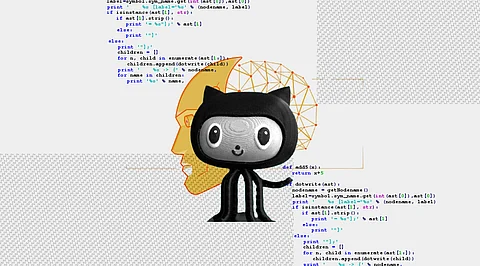
- Insights
- Cryptocurrencies
- Stocks
- White Papers
- Industry
- Geography
- Insights
- Cryptocurrencies
- Stocks
- White Papers
- Industry
- Geography


Machine learning is a rapidly expanding field with the potential to transform many industries. GitHub hosts a large collection of open-source machine-learning projects. A GitHub repository is the .git/ folder inside a project. This repository tracks all changes made to files in your project, building history over time.
Machine learning and deep learning are currently hot topics in both academia and industry. Given their enormous popularity, there are hundreds of thousands of GitHub repositories that contain the source code, documentation, and other useful information for a wide range of projects related to either topic. GitHub is easy to use, supports both public and private repositories, and the major plus is that it's free on small-scale projects. Meanwhile, Git is a tool for managing multiple versions of source code edits that are then transferred to files in a Git repository, GitHub is a location for uploading Git repository copies.
TensorFlow is a complete open-source machine learning platform. TensorFlow is a powerful system for managing all aspects of a machine learning system; however, this class focuses on developing and training machine learning models using a specific TensorFlow API. The TensorFlow APIs are organized hierarchically, with higher-level APIs built on lower-level APIs. Low-level APIs are used by machine-learning researchers to create and test new machine-learning algorithms.
Scikit-learn is an open-source Python machine-learning library built on NumPy and SciPy. It is intended to be simple to use and is compatible with a wide range of other libraries and frameworks. Scikit-learn is ideal for beginners and is frequently used for classification, regression, and clustering tasks.
Google's Keras is a high-level deep learning API for implementing neural networks. It is written in Python and is used to make neural network implementation simple. It also allows for the computation of multiple backend neural networks. Keras is relatively simple to learn and work with because it provides a high-level python frontend with the option of multiple back-ends for computation.
PyTorch is a free and open-source machine learning (ML) framework built on Python and the Torch library. Torch is an open-source ML library written in the Lua scripting language that is used to create deep neural networks. It is one of the most popular platforms for deep learning research. The framework is designed to shorten the time between research prototyping and deployment.
SciPy is a popular Python library among Machine Learning enthusiasts because it includes modules for optimization, linear algebra, integration, and statistics. There is a distinction to be made between the SciPy library and the SciPy stack. SciPy is one of the essential packages that comprise the SciPy stack. SciPy can also be used to manipulate images.
Theano is a Python library that allows us to efficiently evaluate mathematical operations such as multi-dimensional arrays. It is mostly used in the development of Deep Learning Projects. It runs much faster on a graphics processing unit (GPU) than on a CPU. For problems involving large amounts of data, Theano achieves high speeds that put C implementations to shame. It can take advantage of GPUs, which allows it to outperform C on a CPU by orders of magnitude under certain conditions.
Caffe is a C++ and Python-based open-source deep learning framework. It is intended to be fast and efficient, and it is frequently used for image classification and feature extraction. Caffe has a large and active user and developer community, and it is frequently used in conjunction with other libraries and frameworks like TensorFlow and PyTorch.
Shogun is a C++ machine learning software library that is free and open source. It provides a wide range of algorithms and data structures for machine-learning problems. It uses SWIG to provide interfaces for Octave, Python, R, Java, Lua, Ruby, and C#.
TensorFlowTM is an open-source software library that uses data flow graphs to perform numerical computations. The graph's nodes represent mathematical operations, while the graph's edges represent the multidimensional data arrays (tensors) that are communicated between them. The adaptable architecture enables you to use a single API to deploy computation to one or more CPUs or GPUs in a desktop, server, or mobile device.
CatBoost is a gradient-boosting algorithm for decision trees. It was created by Yandex researchers and engineers and is used for search, recommendation systems, personal assistants, self-driving cars, weather prediction, and a variety of other tasks at Yandex and other companies such as CERN, Cloudflare, and Careem taxi. It is open-source and anyone can use it.
